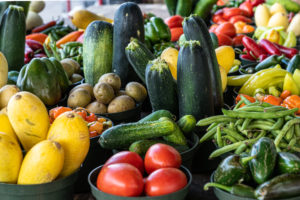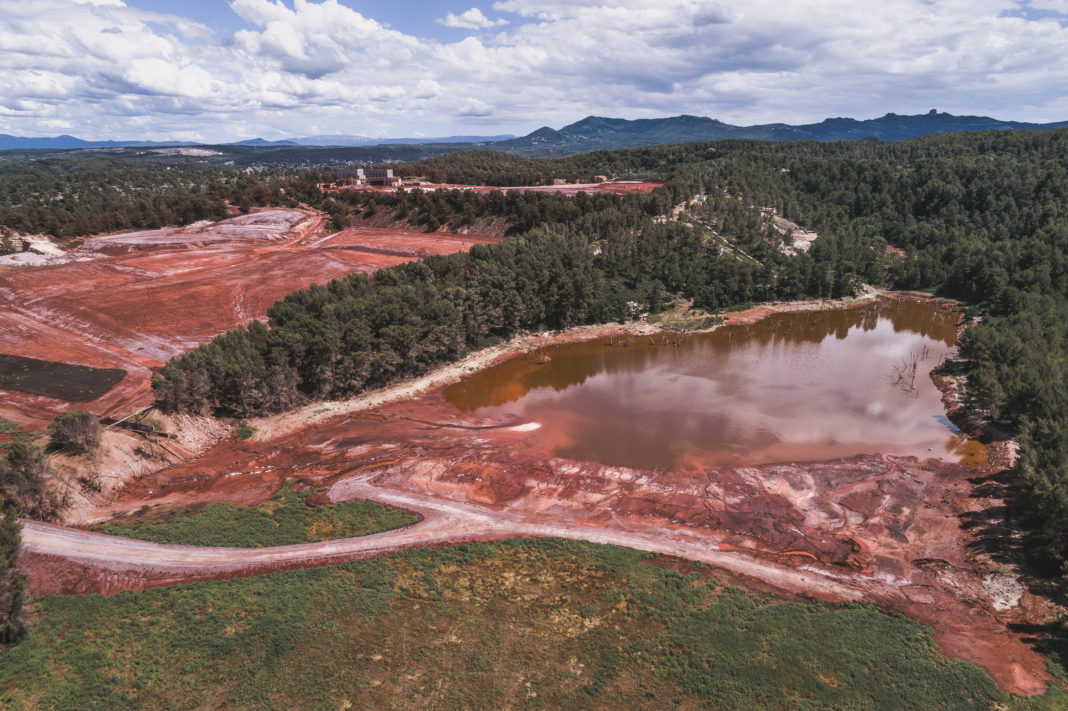The big climate change conundrum is how to provide the necessary calories, nutrition, and living materials to an increasing population without destroying the planet that we live on. According to the United Nations, the world’s population is expected to increase from 7.7 billion in 2020 to 9.7 billion in 2050 and could peak at nearly 11 billion around 2100.
“Climate change needs to be addressed with a sense of urgency. We can start to change the world today with contributions from different approaches and fields, encompassing various technologies, and scientific communities,” says Rodolphe Barrangou, PhD, distinguished professor & university faculty scholar, department of food, bioprocessing and nutrition sciences, North Carolina State University.
The UN’s Intergovernmental Panel on Climate Change (IPCC) special report on land takes on the scope of the 197 million square miles of land on Earth and two extremely complex questions about how land use contributes to climate change and how climate change affects land.
The report’s conclusions lay out a crucial paradox. Humans have harnessed land to develop into a highly successful species but in doing so have wreaked havoc. The destructive patterns of land use, in particular agriculture, deforestation, and development of wetlands, now contribute 23 percent of all human-caused greenhouse gas emissions.1
Genome editing may be one of the solutions to address climate change. A September 2020 report by the Information Technology & Innovation Foundation (ITIF), Gene Editing for the Climate: Biological Solutions for Curbing Greenhouse Emissions, emphasizes that gene-editing technology could be used to develop clean energy and climate solutions that policymakers have to date under-emphasized.2
Healthier forests
Trees are excellent at capturing and sequestering carbon. To be more sustainable, healthier, climate- and disease-resistant, tree breeders need to adopt the best technologies available. CRISPR has tremendous power and promise and is already in use on a small scale at an early research stage to improve genotypes and phenotypes of trees of interest across the world.
“Many forests are commercially exploited for timber, chemicals, and fiber,” says Barrangou. “Much like crops, some commercial staple species are very important, such as pine, poplar, and eucalyptus, but natural biodiversity exists in forests; therefore, arguably all tree species have their role to play across the tree of life given the diverse geographies and environmental conditions where forests occur and thrive. Forest stewardship and management is important and critical, but only part of the picture. Building better forests can be beneficial to so many. I urge the world to be mindful of and more committed to forests. “
To illustrate the fragility of trees, a tree viral pandemic, like Citrus Tristeza Virus (CTV), or the rise of bacterial pathogens such as Citrus Greening (also known as Huanglongbing HLB-disease) can put an entire species at risk. Using classical techniques, breeding a tree can take decades; laboratory-based molecular techniques can reduce that time to 1–2 years along with other required resources. Recently, powerful CRISPR-based technologies grant the ability to accelerate and precisely manage the process by making informed genetic alterations to create beneficial outcomes.
Barrangou adds that CRISPR has a lot to offer forestry but new trails will need to be blazed on this steep and less traveled road that has not only different challenges than crops but also is decades behind in terms of adoption of molecular techniques. Trees are very complex from a genetics perspective with an average genome 10x the size of the human and much less understood. He believes CRISPR offers hope for this sizeable (both literally and figuratively), difficult problem but just as important is a thoroughly thought out implementation plan.
Refining agriculture
“New green products are going to be dependent on available gene-editing tools, ranging from GMO techniques to CRISPR, TALENs, and other technologies. The technology used will depend on the goal, but, in reality, all available means need to be utilized,” says OIiver Peoples, PhD, CEO, Yield10 Bioscience.
One approach to reducing climate change is better utilization of the land to mitigate food waste, which produces 1.9B tons of CO2 each year. At least one third of the annual global food production is wasted due to a variety of reasons, including disease and insects.2 The IPCC report states with high confidence that policies that operate across the food system, including those that reduce food loss and waste and influence dietary choices, enable more sustainable land-use management, enhanced food security and low emissions trajectories.1
The original GMO pesticide-producing applications focused on starting to resolve a part of the issue with good results. On average, GMO use has reduced chemical pesticide use by 37% and increased crop yields by 22%.2
Despite ongoing debate about the use of this technology, of note is a 2016 study by the National Academies of Science, Engineering, and Medicine confirming that there are no safety concerns with GMOs.

More recently, CRISPR and the newer gene-editing applications are also being used to address food issues by reducing apple or potato browning and tomato softening to extend the shelf life of produce. In addition, disease-resistant fruits are under development, such as the Panama disease resistant Cavendish bananas that are being field tested by Tropic Biosciences.
Furthermore, many companies are focusing on extending the nutritional value of food by adding more protein to soy and other staple crops, and making oils, including soybean and canola, healthier. For example, Calyxt used TALENs to develop Calyno, high oleic soybean oil, the first gene-edited product on the market in the US. Another firm of note, Pairwise Plants, is working to develop new and delicious types of leafy greens, berries, and cherries, along with other efforts in staple crops.
The role of technology and its impact on agriculture is unprecedented. According to Peoples, it is important to start by looking at fundamentals in a scientific way and first ask whether a change makes sense; if it has a meaningful impact and is sustainable.
“We thought we had an entire revolution with the use of GMO technologies, which turned out to be one of the greenest developments in agriculture in the last hundred years,” he continues. “Now we have more techniques, including CRISPR genome editing, to manipulate the genome; if you are serious about mitigating climate change you need to access the entire toolbox. This century is going to be about biology, We have to let nature lead the way to find solutions and the most efficient path is using genes to rebalance the agricultural systems while also meeting the growing demand, a difficult paradigm.”
The real problem is identification of the bottlenecks and genes; plants are very complex systems.
For example, photosynthesis is an elegant and efficient tool to help reduce atmospheric levels of CO2 because it already functions as a negative emission technology.2 In field studies, Yield10 Bioscience has improved photosynthesis in some plant species by making reactions more efficient to produce a higher output by tweaking gene regulators and shifting carbon flows through the plant. For example, their C3004 trait gene promotes an increase in photosynthesis in Camelina and canola.
Camelina is a crop with a 100-day growing cycle. As a winter cover crop it is a sustainable climate change effort because it creates a cash crop for farmers incentivizing them to plant it. Cover crops are intended to prevent soil erosion and run off of nitrates and nutrients into water but if they do not generate revenues they are not used as frequently as they could be.
Using CRISPR, one of Yield10 Bioscience’s areas of focus has been on increasing the amount of edible oil in Camelina seeds since oil is the economic driver. Oil is extracted from the seed and the left-over protein fractions are used as animal feed. Field tests have been performed with a triple genome edit and will continue with additional gene edits. Note that CRISPR is not used to introduce foreign genes into a plant; it is used to edit existing bases pairs or genes to introduce new traits.
Another aspect of the food chain that could be harnessed to positively impact climate change is food packaging. Produce and other food companies that use but do not produce plastics are looking for sustainable alternatives, which are not trivial to develop. A cost effective solution to this problem that does not produce more emissions is a huge endeavor. Much as some would like to eliminate plastics, the COVID pandemic has demonstrated they are a necessity.
Plants are the only way to make a biodegradable biomaterial at the scale and cost to compete with petroleum-based products. Yield10 Bioscience’s ultimate goal for Camelina is to engineer the plant to produce a third product, a bioplastic. In order for the species to produce a bioplastic, insertion of microbial genes is necessary, and thus would evolve the CRISPR-edited Camelina into a GMO plant. The oil, protein, and bioplastic material would come from processing the seed and provide additional value to farmers to use it as a cover crop.
If Camelina can be used to replace polystyrene, carbon emissions could potentially be significantly reduced while simultaneously adding the other benefits of producing edible oil and protein. From a climate change and sustainability point of view, multi-product approaches from one plant have the potential to be game changers.
“The green future is going to be a gene-based production system; it has to be. We believe genome editing is an important tool, and CRISPR may allow you to get started but you cannot meet global demand for food production and have a meaningful impact on climate change without using all the available methods at your disposal,” says Peoples.
The ITIF report concurs and strongly encourages governments to increase investments and improve coordination of R&D and expand incentives for adopting gene-editing technology to accelerate the development and deployment of biologically-driven clean energy and climate solutions. They believe that gene editing can increase photosynthesis efficiency, reduce methane emissions from cattle and rice patties, optimize biofuel crops, and solve many other climate challenges.2
References
1. IPCC, 2019: Climate Change and Land: an IPCC special report on climate change, desertification, land degradation, sustainable land management, food security, and greenhouse gas fluxes in terrestrial ecosystems [P.R. Shukla, J. Skea, E. Calvo Buendia, V. Masson-Delmotte, H.O. Pörtner, D. C. Roberts, P. Zhai, R. Slade, S. Connors, R. van Diemen, M. Ferrat, E. Haughey, S. Luz, S. Neogi, M. Pathak, J. Petzold, J. Portugal Pereira, P. Vyas, E. Huntley, K. Kissick, M. Belkacemi, J. Malley, (eds.)]. In press.
2. Val Giddings, R. Rozansky and D.M. Hart, Gene Editing for the Climate: Biological Solutions for Curbing Greenhouse Emissions, Information Technology & Innovation Foundation, September 2020.


